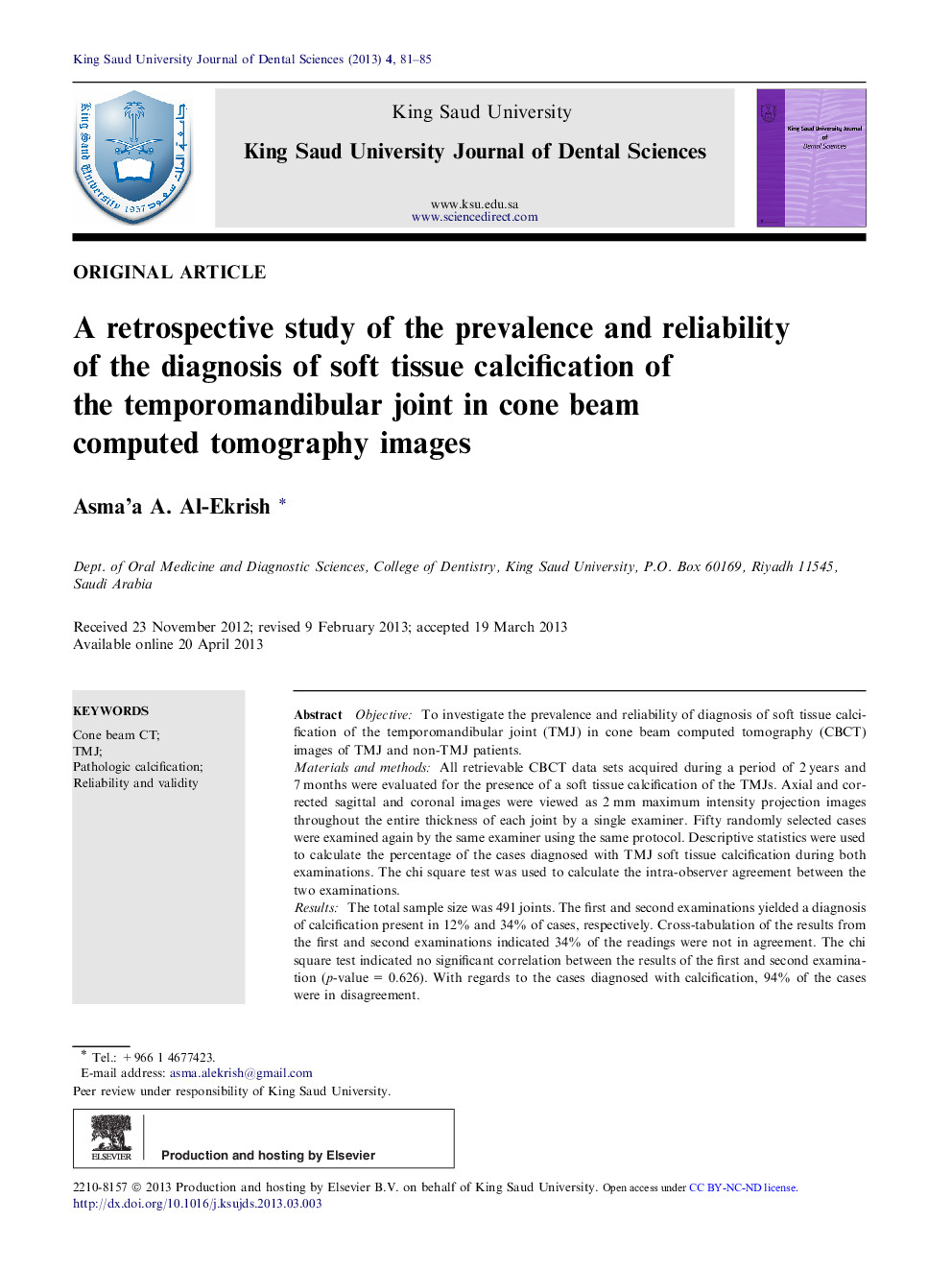| Article ID | Journal | Published Year | Pages | File Type |
|---|---|---|---|---|
| 3160803 | King Saud University Journal of Dental Sciences | 2013 | 5 Pages |
ObjectiveTo investigate the prevalence and reliability of diagnosis of soft tissue calcification of the temporomandibular joint (TMJ) in cone beam computed tomography (CBCT) images of TMJ and non-TMJ patients.Materials and methodsAll retrievable CBCT data sets acquired during a period of 2 years and 7 months were evaluated for the presence of a soft tissue calcification of the TMJs. Axial and corrected sagittal and coronal images were viewed as 2 mm maximum intensity projection images throughout the entire thickness of each joint by a single examiner. Fifty randomly selected cases were examined again by the same examiner using the same protocol. Descriptive statistics were used to calculate the percentage of the cases diagnosed with TMJ soft tissue calcification during both examinations. The chi square test was used to calculate the intra-observer agreement between the two examinations.ResultsThe total sample size was 491 joints. The first and second examinations yielded a diagnosis of calcification present in 12% and 34% of cases, respectively. Cross-tabulation of the results from the first and second examinations indicated 34% of the readings were not in agreement. The chi square test indicated no significant correlation between the results of the first and second examination (p-value = 0.626). With regards to the cases diagnosed with calcification, 94% of the cases were in disagreement.ConclusionsThe CBCT images produced by the device used in the present study were of low reliability for the diagnosis of TMJ soft tissue calcification. Studies are needed to develop CBCT protocols which may accurately and reliably demonstrate such calcification.
